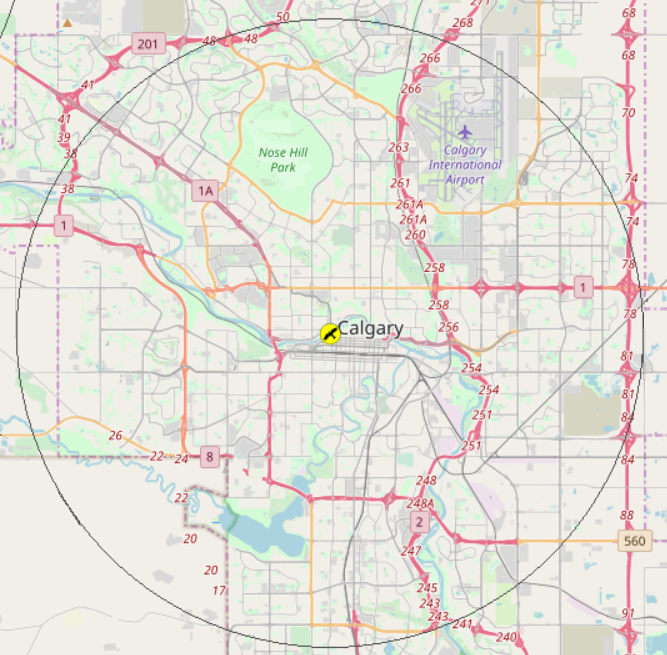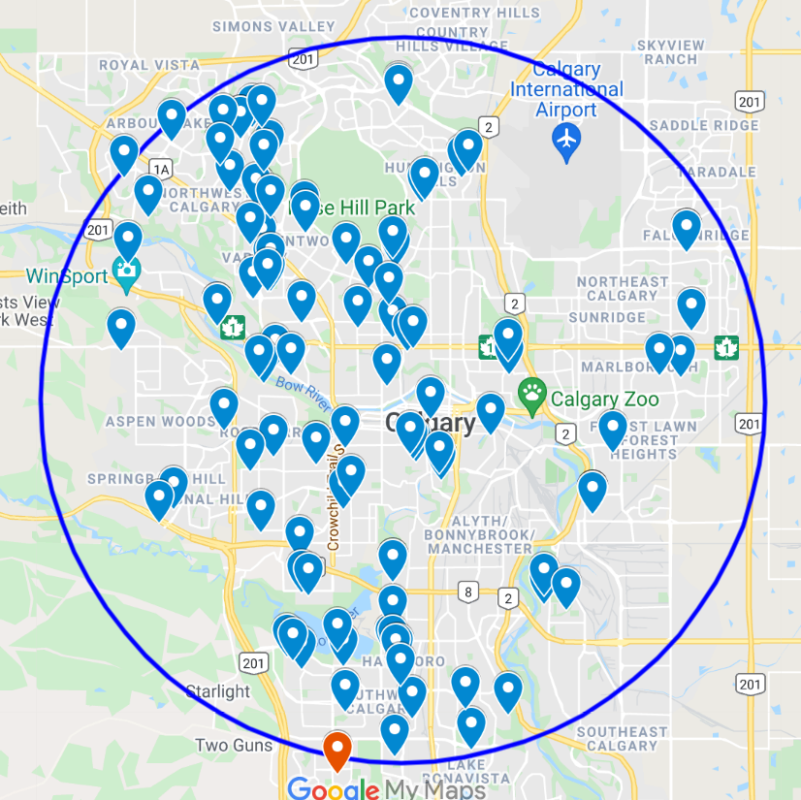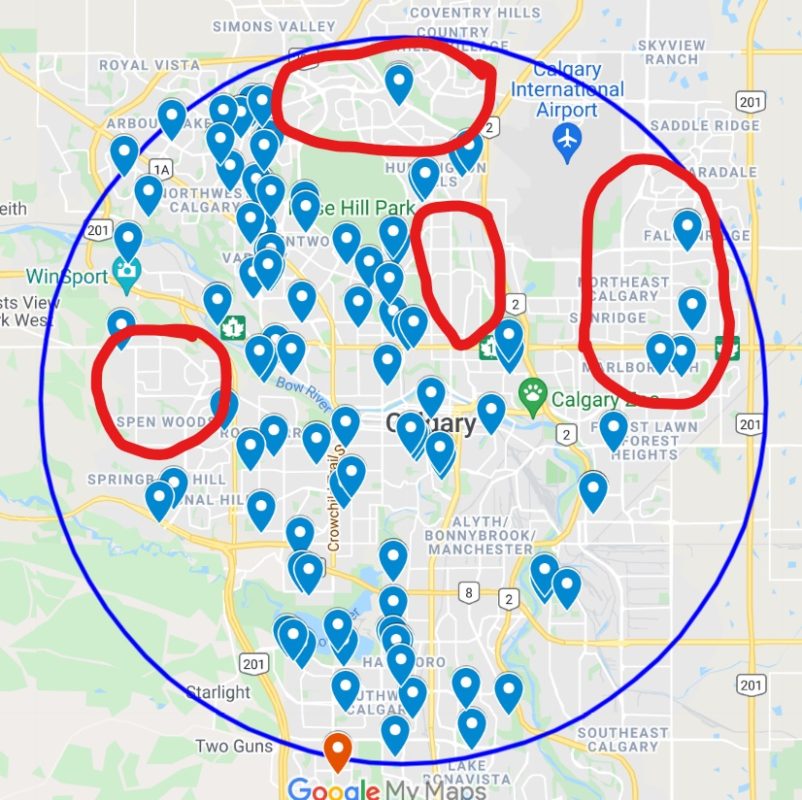Posted by Bob Lefebvre
There has been a great deal of interest this year in the annual Calgary Christmas Bird Count. Matt Wallace, the Count Coordinator, and his leaders already have enough people registered to fill all the field teams. But if you’d like to participate by counting birds in your yard on Sunday December 19th, you are welcome to join us. You can count for as little as 30 minutes over the course of the day, or as long as you are able to – all at once, or intermittently.

For your observations to be added to the official count, you must live within the Calgary Count Circle:

If you are interested in taking part, just fill out the registration form below (it is a Google form, but you do not have to be signed into a Google account to fill it out). Matt Wallace or myself (the Feeder Watcher Coordinator) will verify that you are in the circle, and contact you with everything you need to know in order to participate in this long-running Citizen Science activity. We can also send you information on common winter backyard birds of Calgary, with photos.
Here is the link: Register as a Feeder Watcher in the 2021 Calgary CBC
We are particularly interested in trying to get more complete coverage of the city with our Feeder Watchers. There are a few neighbourhoods which are under-represented, as you can see in the map below, which shows the approximate locations of all of our participants.

We would especially like to fill out this map in northeast Calgary, and there are a few other areas without much coverage, a shown below.

So if you live in one of these areas, please consider registering for the count. But we will accept you wherever you are!








